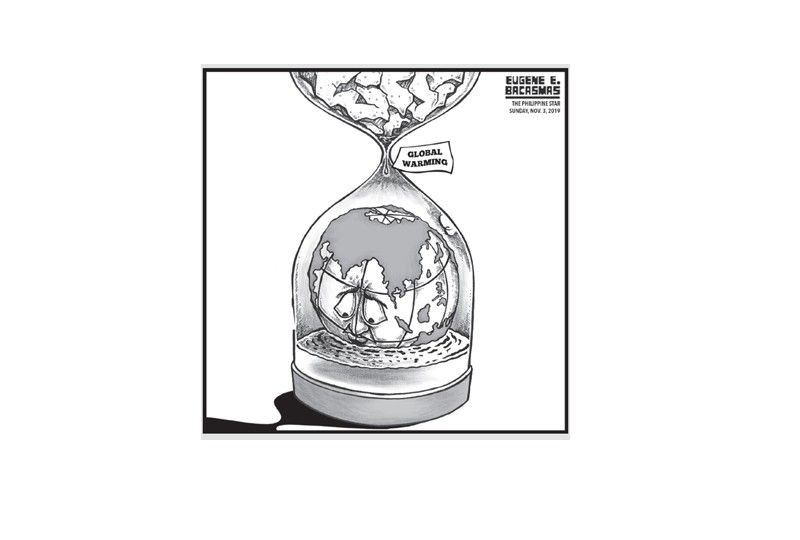EDITORIAL - Wiped out by 2050

Thirty years may seem like a long way off, but it’s never too early to prepare for a cataclysm predicted by scientists. Research conducted by US science organization Climate Central showed that rising seas due to global warming could affect three times more people than previously projected.
More worrisome for Filipinos is that the research, published Tuesday in the journal Nature Communications, also showed that approximately 70 percent of people at risk of being inundated by rising seas are in only eight countries in Asia, including the Philippines.
Filipinos already know that coastal areas in the cities of Manila, Malabon and Navotas and, increasingly, parts of Bulacan province have been gradually sinking into the sea. Warming temperatures, however, could accelerate the sea rise and threaten many other coastal areas in this archipelago of 7,100 islands.
Under a new system of calculating land elevation and with the help of artificial intelligence, Climate Central estimated that up to 150 million people worldwide currently live in areas that would be below high-tide water level by 2050. That means nearly all of southern Vietnam including Ho Chi Minh City being wiped out as well as Mumbai in India and central Shanghai in the Chinese mainland.
Climate Central, based in New Jersey, is urging governments to ramp up defensive measures. Other Asian countries projected to be most affected by rising seas are Bangladesh, Indonesia, Japan and Thailand, with major cities among the most vulnerable.
At this point, according to the study, approximately 110 million people already live in places that are below the high tide line. In several areas, defensive measures have been put in place such as seawalls and levees. But the study pointed out that these are not always enough to stop inundation, as shown in the destruction of the levees in New Orleans during the onslaught of Hurricane Katrina.
A better, long-term response, as suggested by the study, is the relocation of coastal communities to higher ground inland. This has been done to a limited extent in the coastal villages devastated by Super Typhoon Yolanda in November 2013. Relocation, however, is complicated, whether in Manila’s coastal barangays or in rural villages where people are dependent on the sea for their livelihood.
Still, it’s a challenge that no country at risk can ignore. The sea cannot be rolled back, but disaster mitigation is possible. Scientists have been sounding the alarm for some time now. It’s never too early to prepare for approaching catastrophe.
- Latest
- Trending


























